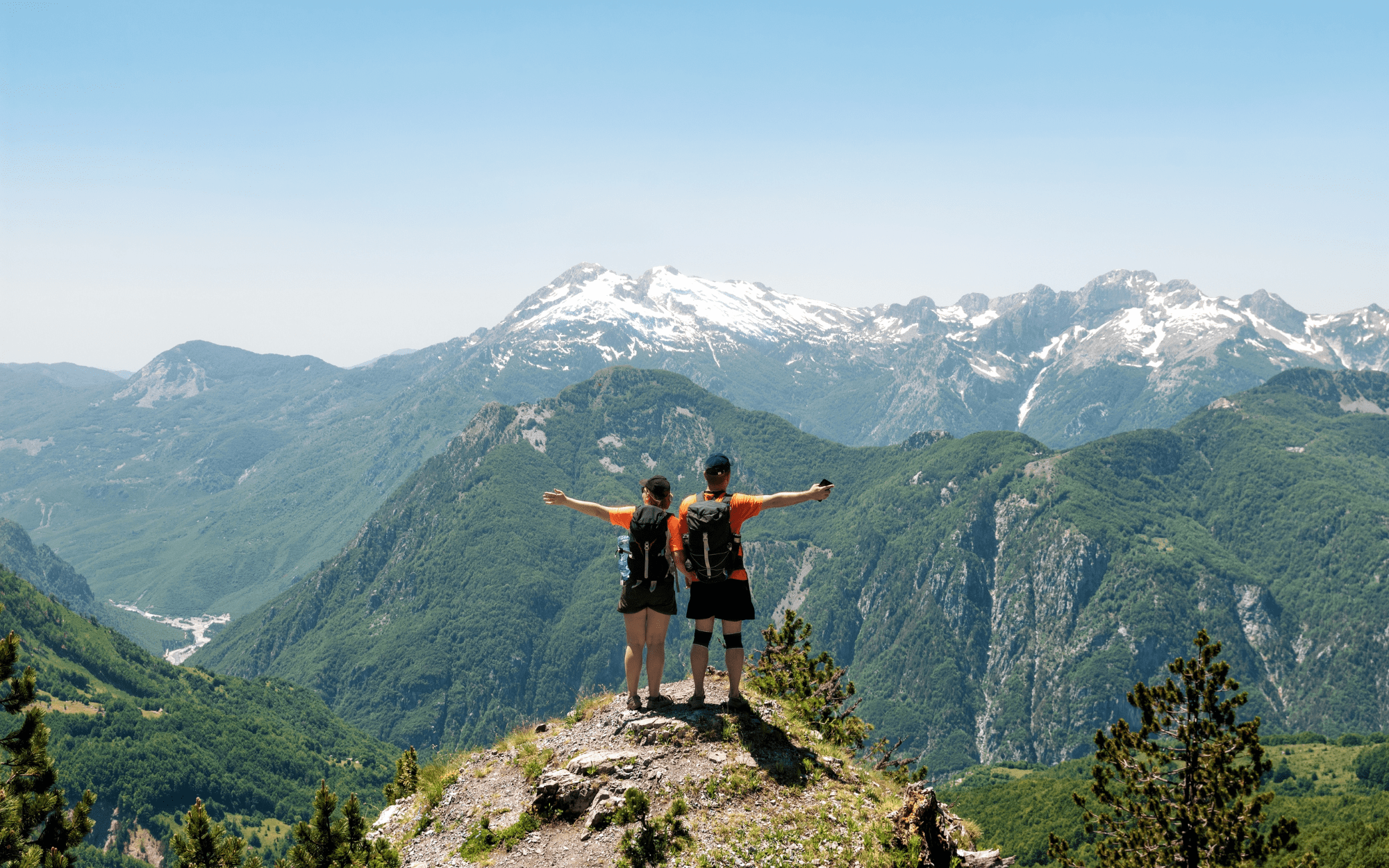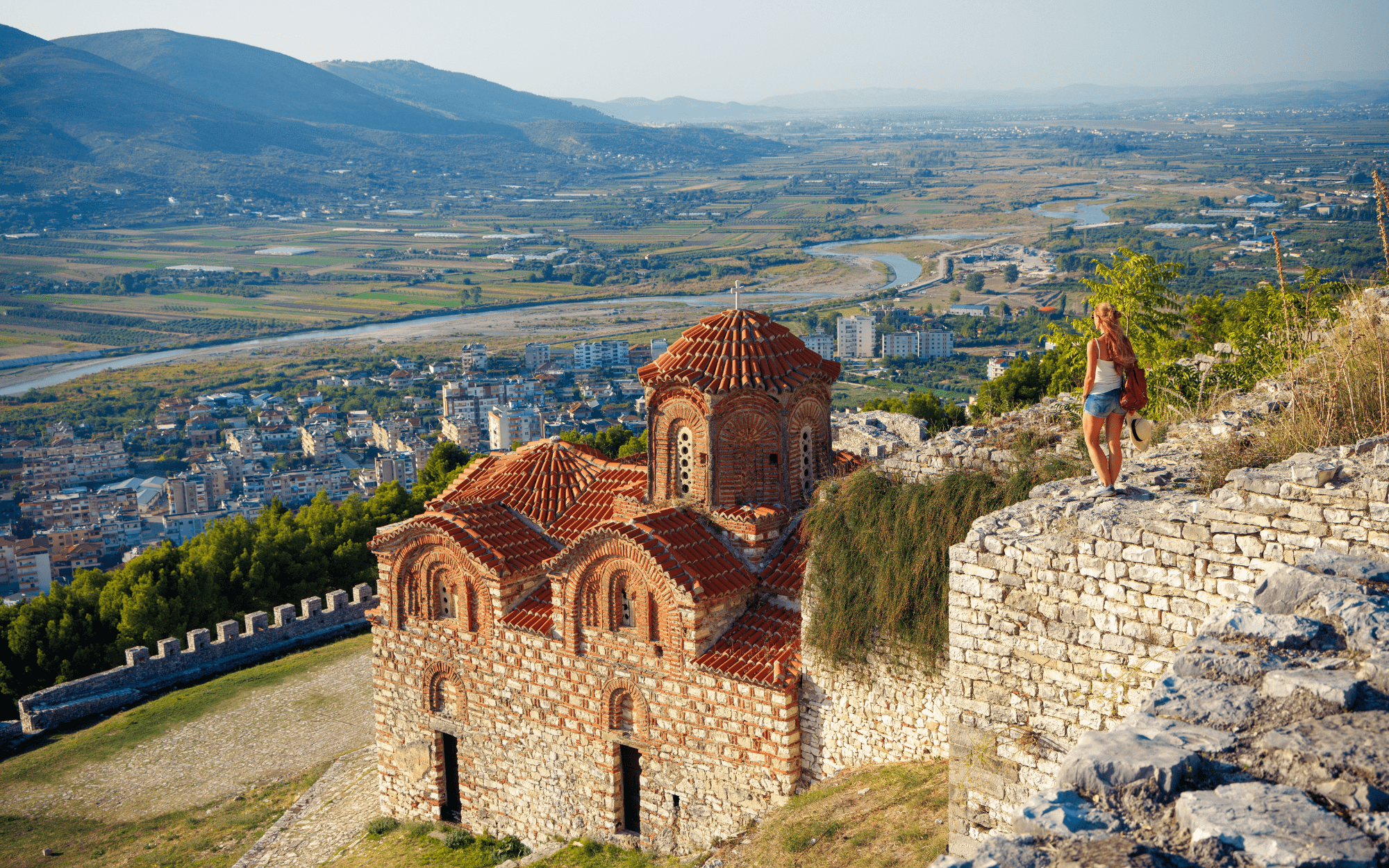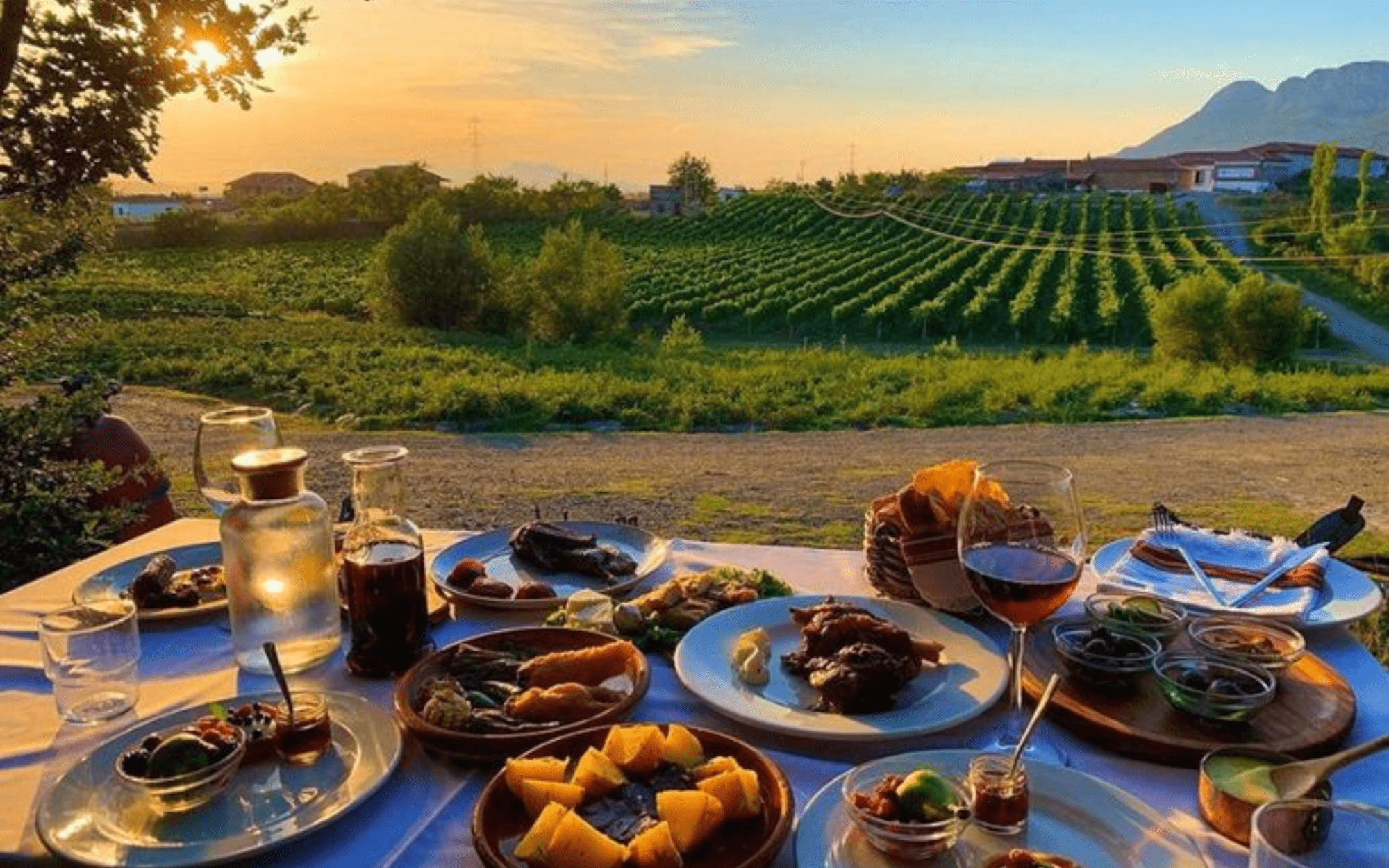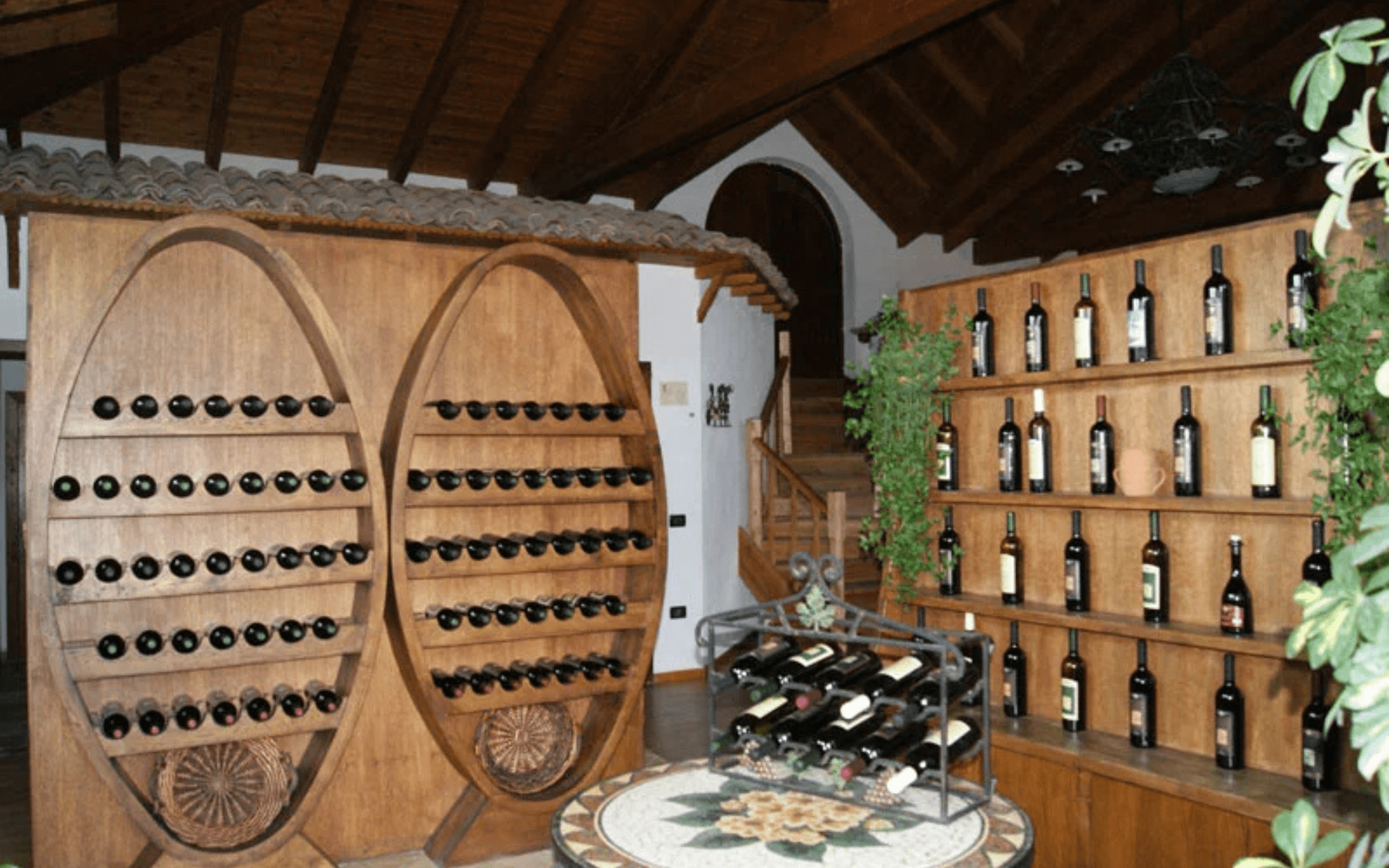The ancient stone walls of Gjirokastër’s Ottoman houses glow amber in the soft spring light, their distinctive slate roofs creating a mesmerising pattern across the hillside. In the cobbled square below, locals sip mountain tea at unhurried cafés while children play freely in spaces that, just weeks later, will be filled with tour groups and souvenir sellers. This is Albania in its secret season – a time when one of Europe’s most intriguing destinations reveals itself most authentically.
For years, Albania remained Europe’s final frontier, a mysterious land isolated by decades of communist rule and overshadowed by outdated stereotypes. Today, however, this Balkan nation is experiencing a remarkable renaissance, with summer visitors flocking to its pristine beaches and UNESCO-listed towns. Yet those who venture here during the quieter months of April to June and September to October discover a different Albania altogether – one where ancient traditions, breathtaking landscapes and genuine hospitality can be experienced without the summer crowds.
During these shoulder seasons, Albania offers perfect conditions for exploration. Spring brings mild temperatures and wildflower-carpeted hillsides, while autumn delivers golden light, harvest celebrations and the lingering warmth of the Mediterranean. These are the months when Albania’s true character emerges from behind the tourist façade, inviting travellers to discover a country that seamlessly blends natural splendour with cultural richness.
From the snow-capped “Accursed Mountains” in the north to the crystal-clear waters of the Albanian Riviera in the south, from Ottoman-era cities to ancient archaeological sites, Albania packs remarkable diversity into a compact, accessible package. And during the low season, this diversity becomes all the more rewarding to explore.
This guide will take you through Albania’s secret seasons, revealing how to experience this extraordinary country when it’s at its most authentic, sustainable and welcoming. Whether you’re hiking through alpine meadows, exploring UNESCO heritage sites, or sampling farm-to-table cuisine, Albania’s low season offers treasures that the summer crowds miss entirely.
Overview: Albania in the Low Season
A Land of Contrasts
Albania sits at a fascinating crossroads of European history and culture. This small Balkan nation, roughly the size of Belgium, packs extraordinary diversity into its borders. From the rugged Albanian Alps in the north to the sun-drenched Riviera in the south, from bustling modern Tirana to the preserved Ottoman architecture of Berat and Gjirokastër, Albania offers a remarkable tapestry of experiences within easy reach of one another.
What makes Albania particularly special during its low seasons (April to June and September to October) is the opportunity to experience this diversity without the summer crowds that have increasingly discovered the country’s charms. These shoulder months reveal Albania at its most authentic, when the rhythms of local life take precedence over tourism, and when the natural and cultural landscapes can be appreciated in relative tranquillity.
The Low Season Advantage
Albania’s tourism has grown exponentially in recent years, with the summer months of July and August seeing beaches packed with visitors from across Europe and beyond. The country ranked fourth globally for percentage increase in international tourist arrivals in 2023, a testament to its rising profile. Yet this popularity comes with the predictable challenges of crowded attractions, strained infrastructure, and a tourism experience that can feel increasingly standardised.
The low season offers a compelling alternative. Visit the UNESCO World Heritage city of Berat in May, and you’ll find yourself wandering its distinctive white Ottoman houses, known as “the city of a thousand windows”, alongside locals rather than tour groups. You might stumble upon impromptu folk music performances in small cafés or be invited to join a family celebration. These spontaneous cultural encounters simply aren’t possible during the hectic summer months.
Explore the ancient ruins of Butrint in October, and you might have sections of this remarkable archaeological site entirely to yourself. As you walk among 2,500-year-old Greek and Roman ruins, local guides have time to share detailed stories about the civilizations that once thrived here, connecting you more deeply to Albania’s rich historical tapestry.
Even the popular beaches of the Albanian Riviera, which become almost impossibly crowded in summer, return to a state of Mediterranean serenity during these quieter months. You can stroll along empty stretches of coastline, discovering hidden coves and sea caves that remain inaccessible during high season due to boat traffic.
Accommodation prices drop significantly outside the peak season, often by 30-50%, while availability increases dramatically. Restaurants that might require reservations days in advance during summer welcome spontaneous diners in the shoulder seasons. Perhaps most importantly, interactions with Albanians become more genuine and unhurried when the pressure of high season subsides.
Weather and Seasonal Rhythms
Albania’s climate varies considerably from the coastal Mediterranean regions to the mountainous interior, creating distinct seasonal experiences across the country.
Spring (April-June)
Spring arrives early along Albania’s coast, with April bringing average temperatures of 15-20°C (59-68°F) to coastal cities like Durrës and Vlorë. By May, much of the country enjoys pleasantly warm days, though evenings can still be cool, especially in higher elevations. Occasional rainfall creates lush landscapes, with wildflowers carpeting hillsides and mountain meadows. By June, temperatures climb steadily, reaching summer-like warmth (often 25-30°C/77-86°F) but without the intense heat of July and August.
This is an ideal season for hiking, with trails in the Albanian Alps becoming accessible as snow melts from all but the highest peaks. The Theth to Valbona hike, one of Albania’s most celebrated routes, typically becomes passable by late May, offering dramatic mountain scenery without the summer crowds. As you trek through alpine meadows, you’ll encounter shepherds moving their flocks to summer pastures, continuing traditions that have remained unchanged for centuries.
Spring is also perfect for exploring cities and archaeological sites in comfortable temperatures, before the summer heat makes midday sightseeing challenging. The ancient city of Apollonia comes alive with blooming wildflowers growing among the ruins, creating a magical atmosphere for photography and contemplation of Albania’s ancient past.
Autumn (September-October)
September retains much of summer’s warmth, particularly along the coast where sea temperatures remain inviting for swimming well into October. Coastal areas enjoy average temperatures of 20-25°C (68-77°F) in September, gradually cooling through October. The mountains see a more pronounced cooling, with crisp days and cold nights by mid-autumn.
This season brings spectacular colour to Albania’s landscapes, particularly in the forested mountains where foliage turns to gold and crimson. The autumn light which is softer and more golden than summer’s harsh glare, creates perfect conditions for photography, especially in the historic cities where it illuminates ancient stone and traditional architecture beautifully.
Autumn also coincides with harvest season, bringing a bounty of fresh produce to markets and restaurants. This is the time to sample Albania’s emerging wine scene, particularly around Berat where vineyards offer tastings of indigenous varieties like Shesh i Zi and Kallmet. In rural areas, you might be invited to join grape or olive harvests, experiencing agricultural traditions that form the backbone of Albanian cultural identity.
Cultural Calendar
Albania’s cultural calendar features numerous events during the low seasons that offer insights into local traditions and contemporary culture.
The Spring Day festival (Dita e Verës) on March 14th marks the end of winter and the beginning of spring. Though technically just before the low season begins, this ancient pagan holiday which is celebrated nationwide but with particular enthusiasm in Elbasan, offers a fascinating glimpse into Albanian traditions, with special foods like ballakume (a sweet biscuit) and public celebrations. Families gather in parks and public spaces to picnic and celebrate together, often wearing traditional costumes and performing folk dances.
In late April, the Flower Festival in Tirana transforms the capital with floral displays and cultural performances. The city’s main boulevard becomes a riot of colour, with traditional music and dance performances throughout the day. Local artisans set up stalls selling handcrafted items, offering visitors a chance to purchase authentic Albanian crafts directly from their makers.
May brings the Korça Beer Festival, celebrating Albania’s oldest brewery in a city known for its distinctive culture and architecture. This event combines Albania’s brewing heritage with live music performances ranging from traditional folk to contemporary Albanian pop. The festival takes place in Korça’s beautiful old town, allowing visitors to experience both the city’s architectural heritage and its vibrant contemporary culture.
June sees the start of the Butrint Festival, with performances of classical music and drama in the atmospheric ancient theatre of this UNESCO World Heritage site. Watching a Greek tragedy performed in the same space where it might have been staged 2,000 years ago creates a powerful connection to Albania’s ancient past.
Autumn offers equally compelling cultural experiences. The Apple Festival in Korça (October) celebrates the harvest with food, music, and traditional dancing. Local families bring their best apple dishes to share, from pies to rakija (fruit brandy), while folk ensembles perform traditional dances in colorful costumes.
The Brar Olive Festival near Tirana (November) showcases traditional olive harvesting methods and local culinary specialties. Visitors can participate in the harvest, learn traditional pressing techniques, and sample freshly pressed olive oil with warm bread, a simple but unforgettable taste of Albanian rural life.
Throughout September and October, various towns host grape harvest celebrations, particularly in the wine-producing regions around Berat. These intimate festivals offer a window into Albanian rural traditions, with opportunities to participate in grape stomping, taste young wine, and join communal meals featuring seasonal specialties.
Sustainable Tourism Insights
Albania’s rapid tourism growth has brought both opportunities and challenges for sustainability. The country has responded by expanding its protected areas to cover 21.4% of its territory, up from 17.5% in recent years. This includes the establishment of the Albanian Alps National Park, covering approximately 83,000 hectares of mountain landscapes and valleys, which aims to better integrate biodiversity conservation with rural development.
Perhaps most significantly, 2023 saw the creation of the Vjosa Wild River National Park – the world’s first wild river national park. This groundbreaking conservation initiative protects one of Europe’s last wild rivers, preserving its ecological significance while allowing for sustainable activities like rafting and fishing that support local livelihoods. Visiting the Vjosa during low season offers a chance to experience this natural wonder with minimal impact, as lower visitor numbers reduce pressure on the fragile ecosystem.
The Albanian Responsible Travel Initiative (ARTI) works to position Albania as a sustainable destination, focusing on preserving natural and cultural resources, supporting local communities, and promoting eco-friendly practices. Their vision is to rank Albania among the top sustainable tourism destinations in Europe while ensuring the benefits of tourism serve future generations.
Visiting during the low season inherently supports more sustainable tourism patterns. The reduced pressure on infrastructure, more even distribution of tourism income throughout the year, and lower resource consumption all contribute to a more balanced tourism ecosystem. Many eco-tourism initiatives, from guided wildlife watching to community-based tourism projects, operate more effectively outside the peak months when they can offer more personalised experiences with less environmental impact.
In the Divjaka-Karavasta National Park, for example, spring and autumn are ideal times for birdwatching, with opportunities to spot the rare Dalmatian pelican without disturbing nesting colonies. Local guides, many trained through conservation programs, share their knowledge of the park’s ecology while ensuring visitors maintain appropriate distances from sensitive habitats.
Community Benefits
For many Albanian communities, especially in rural and coastal areas, the development of a more year-round tourism economy represents a crucial opportunity for sustainable development. The extreme seasonality of tourism (with businesses making most of their annual income in just two months) creates economic instability and encourages unsustainable development patterns.
Low season visitors help address this imbalance. When tourists visit in April, May, June, September, or October, their spending supports businesses during traditionally leaner months, encouraging year-round employment rather than seasonal jobs. This creates more stable livelihoods and reduces the pressure for young Albanians to emigrate for work.
In the Albanian Alps, community-based tourism initiatives in villages like Theth and Valbona benefit particularly from extended seasons. Traditional guesthouses can maintain operations longer, preserving cultural heritage while providing economic opportunities. Families who have maintained these mountain homes for generations can continue traditional practices like cheese-making and wool weaving, sharing these skills with interested visitors.
Along the coast, fishing communities can supplement their income by offering authentic seafood dining experiences and boat tours during months when they would traditionally focus solely on fishing. In villages like Qeparo and Borsh, fishermen take visitors out on morning catches, then prepare the day’s haul for lunch at small family restaurants, an experience that connects visitors directly to local food traditions and maritime heritage.
The more balanced visitor numbers of the low season also allow for more meaningful cultural exchanges. When not overwhelmed by peak season demands, Albanians have more time and energy to share their traditions, stories, and daily lives with visitors, creating the kind of authentic connections that define truly rewarding travel experiences.
Comparison with High Season
While Albania’s high season (July-August) offers reliably hot, sunny weather and the full energy of a country in vacation mode, the experience differs markedly from the low seasons in several key ways.
During summer, Albania’s most popular beaches transform dramatically. Ksamil, near Saranda, becomes so crowded that finding space to lay a towel becomes challenging. Beach clubs occupy much of the prime coastline, with rows of sunbeds and umbrellas covering the sand. Prices for accommodation near the coast can triple compared to May or September, while quality often decreases as businesses struggle to meet peak demand.
The historic cities face similar pressures. In Gjirokastër and Berat, tour groups fill the narrow streets during summer days, creating bottlenecks at popular sites and changing the atmosphere of these otherwise tranquil historic towns. Restaurants in tourist areas shift toward more standardised menus catering to international tastes rather than showcasing authentic Albanian cuisine.
By contrast, low season visitors experience a more balanced Albania. The beaches return to a state of natural beauty, with plenty of space for those who don’t mind slightly cooler water temperatures. Historic sites can be explored at leisure, with opportunities to interact with local guides who have time to share deeper insights. Restaurants serve more traditional fare, often using the freshest seasonal ingredients from nearby farms and fishing boats.
Perhaps most significantly, the low season reveals Albania’s remarkable hospitality in its truest form. Freed from the pressures of peak season, Albanians can welcome visitors with the genuine warmth and generosity for which they’re known, turning a simple visit into a meaningful cultural exchange that benefits both guests and hosts alike.





